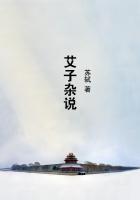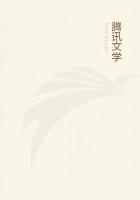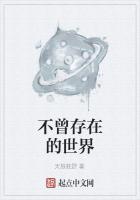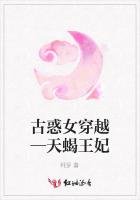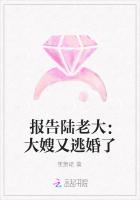Further, the corn-spirit in bull form is sometimes believed to be killed at threshing. At Auxerre, in threshing the last bundle of corn, they call out twelve times, We are killing the Bull. In the neighbourhood of Bordeaux, where a butcher kills an ox on the field immediately after the close of the reaping, it is said of the man who gives the last stroke at threshing that he has killed the Bull. At Chambéry the last sheaf is called the sheaf of the Young Ox, and a race takes place to it in which all the reapers join. When the last stroke is given at threshing they say that the Ox is killed; and immediately thereupon a real ox is slaughtered by the reaper who cut the last corn. The flesh of the ox is eaten by the threshers at supper.
We have seen that sometimes the young corn-spirit, whose task it is to quicken the corn of the coming year, is believed to be born as a Corn-baby on the harvest-field. Similarly in Berry the young corn-spirit is sometimes supposed to be born on the field in calf form; for when a binder has not rope enough to bind all the corn in sheaves, he puts aside the wheat that remains over and imitates the lowing of a cow. The meaning is that the sheaf has given birth to a calf. In Puy-de-D?me when a binder cannot keep up with the reaper whom he or she follows, they say He (or she) is giving birth to the Calf. In some parts of Prussia, in similar circumstances, they call out to the woman, The Bull is coming, and imitate the bellowing of a bull. In these cases the woman is conceived as the Corn-cow or old corn-spirit, while the supposed calf is the Corn-calf or young corn-spirit. In some parts of Austria a mythical calf (Muhk?lbchen) is believed to be seen amongst the sprouting corn in spring and to push the children; when the corn waves in the wind they say, The Calf is going about. Clearly, as Mannhardt observes, this calf of the spring-time is the same animal which is afterwards believed to be killed at reaping.
8. The Corn-spirit as a Horse or Mare.
SOMETIMES the corn-spirit appears in the shape of a horse or mare. Between Kalw and Stuttgart, when the corn bends before the wind, they say, There runs the Horse. At Bohlingen, near Radolfzell in Baden, the last sheaf of oats is called the Oats-stallion. In Hertfordshire, at the end of the reaping, there is or used to be observed a ceremony called crying the Mare. The last blades of corn left standing on the field are tied together and called the Mare. The reapers stand at a distance and throw their sickles at it; he who cuts it through has the prize, with acclamations and good cheer. After it is cut the reapers cry thrice with a loud voice, I have her! Others answer thrice, What have you? A Mare! a Mare! a Mare! Whose is she? is next asked thrice. A. B.'s, naming the owner thrice. Whither will you send her? To C. D., naming some neighbour who has not reaped all his corn. In this custom the corn-spirit in the form of a mare is passed on from a farm where the corn is all cut to another farm where it is still standing, and where therefore the corn-spirit may be supposed naturally to take refuge. In Shropshire the custom is similar. The farmer who finishes his harvest last, and who therefore cannot send the Mare to any one else, is said to keep her all winter. The mocking offer of the Mare to a laggard neighbour was sometimes responded to by a mocking acceptance of her help. Thus an old man told an inquirer, While we wun at supper, a mon cumm'd wi' a autar [halter] to fatch her away. At one place a real mare used to be sent, but the man who rode her was subjected to some rough treatment at the farmhouse to which he paid his unwelcome visit.
In the neighbourhood of Lille the idea of the corn-spirit in horse form in clearly preserved. When a harvester grows weary at his work, it is said, He has the fatigue of the Horse. The first sheaf, called the Cross of the Horse, is placed on a cross of boxwood in the barn, and the youngest horse on the farm must tread on it. The reapers dance round the last blades of corn, crying, See the remains of the Horse. The sheaf made out of these last blades is given to the youngest horse of the parish (commune) to eat. This youngest horse of the parish clearly represents, as Mannhardt says, the corn-spirit of the following year, the Corn-foal, which absorbs the spirit of the old Corn-horse by eating the last corn cut; for, as usual, the old corn-spirit takes his final refuge in the last sheaf. The thresher of the last sheaf is said to beat the Horse.
9. The Corn-spirit as a Pig (Boar or Sow).
THE LAST animal embodiment of the corn-spirit which we shall notice is the pig (boar or sow). In Thüringen, when the wind sets the young corn in motion, they sometimes say, The Boar is rushing through the corn. Amongst the Esthonians of the island of Oesel the last sheaf is called the Ryeboar, and the man who gets it is saluted with a cry of You have the Rye-boar on your back! In reply he strikes up a song, in which he prays for plenty. At Kohlerwinkel, near Augsburg, at the close of the harvest, the last bunch of standing corn is cut down, stalk by stalk, by all the reapers in turn. He who cuts the last stalk gets the Sow, and is laughed at. In other Swabian villages also the man who cuts the last corn has the Sow, or has the Rye-sow. At Bohlingen, near Radolfzell in Baden, the last sheaf is called the Rye-sow or the Wheat-sow, according to the crop; and at R?hrenbach in Baden the person who brings the last armful for the last sheaf is called the Corn-sow or the Oats-sow. At Friedingen, in Swabia, the thresher who gives the last stroke is called SowBarley-sow, Corn-sow, or the like, according to the crop. At Onstmettingen the man who gives the last stroke at threshing has the Sow; he is often bound up in a sheaf and dragged by a rope along the ground.

